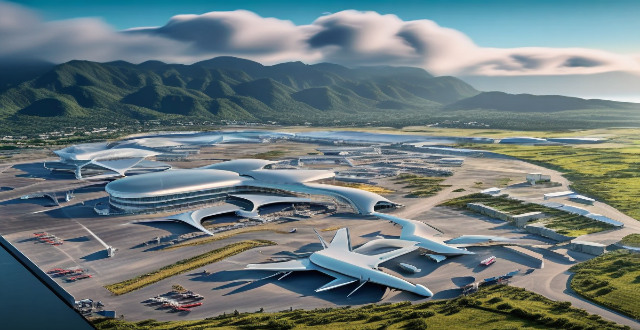The air travel industry is facing numerous challenges due to changing climate patterns, including extreme weather events, altered flight paths, airport infrastructure damage, health risks, and environmental concerns. These challenges can impact flight schedules, increase maintenance costs, and require changes to air traffic control systems. To adapt, airlines must invest in innovative solutions that prioritize sustainability and resilience.

Challenges Faced by Air Travel Industry Due to Changing Climate Patterns
The air travel industry is not immune to the effects of changing climate patterns. As global temperatures continue to rise, airlines are facing a number of challenges that can impact their operations and bottom line. In this article, we will explore some of the key challenges faced by the air travel industry due to changing climate patterns.
Extreme Weather Events
One of the most significant challenges faced by the air travel industry is the increased frequency and severity of extreme weather events. These events can include:
- Storms: Heavy rain, strong winds, and lightning can cause flight delays or cancellations.
- Fog: Low visibility caused by fog can lead to delays or cancellations at airports.
- Ice: Ice formation on runways and aircraft can make it unsafe for planes to take off or land.
- Turbulence: Changes in air pressure caused by extreme weather events can create turbulence, which can be dangerous for passengers and crew.
Extreme weather events not only impact flight schedules but also increase maintenance costs for airlines as they have to deal with damage caused by these events.
Altered Flight Paths
As climate change alters weather patterns, it may become necessary for airlines to adjust their flight paths to avoid areas with extreme weather conditions. This can result in longer flight times and increased fuel consumption, leading to higher costs for airlines. Additionally, altered flight paths may require changes to air traffic control systems, which can be costly and time-consuming.
Airport Infrastructure Damage
Extreme weather events can also cause damage to airport infrastructure, such as runways, terminals, and control towers. This damage can lead to disruptions in air travel and significant repair costs for airports and airlines alike.
Health Risks
Changes in climate patterns can also pose health risks for travelers. For example, warmer temperatures can lead to an increase in mosquito populations, which can spread diseases like dengue fever and malaria. Airlines may need to take additional precautions to protect passengers and crew from these health risks.
Environmental Concerns
Finally, the air travel industry faces environmental concerns related to changing climate patterns. As global temperatures rise, there is a growing need for airlines to reduce their carbon footprint and adopt more sustainable practices. This can include investing in new technologies, such as electric aircraft or biofuels, and implementing measures to reduce waste and energy consumption.
In conclusion, the air travel industry is facing numerous challenges due to changing climate patterns. These challenges range from dealing with extreme weather events and altered flight paths to addressing environmental concerns and protecting public health. To adapt to these challenges, airlines must remain flexible and invest in innovative solutions that prioritize sustainability and resilience.